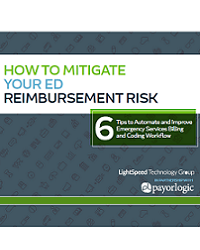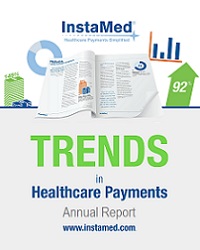How to Mitigate Your ED Reimbursement Risk

6 Tips to Automate and Improve Emergency Services Billing and Coding Workflow
As requirements for Emergency Department claims increase, practice executives must be proactive if they expect to be paid properly for services provided. A new level of revenue integrity diligence is essential for all involved in the ED revenue cycle:
- Emergency medicine practices
- Emergency billing companies
- Health system executives
7 Reasons Why Your Practice’s Communications Strategy Should Align with Millennials
 Unless your medical practice is aimed specifically at children, you likely think your typical patient is older and not very technologically savvy. While it’s true that older patients likely comprise the lion’s share of your practice visits, prospective patients who are 37 or younger represent half of the U.S. population, with nine in 10 younger people owning powerful smartphones.
Unless your medical practice is aimed specifically at children, you likely think your typical patient is older and not very technologically savvy. While it’s true that older patients likely comprise the lion’s share of your practice visits, prospective patients who are 37 or younger represent half of the U.S. population, with nine in 10 younger people owning powerful smartphones.
In order to attract and retain Millennial and Generation Z patients, your practice communications must be unified and reach patients in the manner they’re most comfortable with. Increasingly, that’s by text message, both simple texts (SMS) and multimedia texts (MMS) as part of a multi-platform communications strategy.
Trends in Healthcare Payments: Ninth Annual Report
 Trends point toward the explosive growth of consumerism and how it will challenge providers and payers to rethink business as usual.
Trends point toward the explosive growth of consumerism and how it will challenge providers and payers to rethink business as usual.
Highlights
U.S. healthcare spending is expected to reach $6 trillion by 2027, at an average growth rate of 5.5 percent per year. Consumer payment responsibility remains a powerful driver of that growth with out-of-pocket spending reaching $365 billion in 2017 or 10 percent of the total National Health Expenditure (NHE).
Since this report was first published in 2011, the trends in healthcare payments have consistently shown consumers are paying more for their healthcare. In this edition of the report, consumer payment responsibility is again on the rise, but the impacts are reaching a fever pitch in the healthcare industry.
The healthcare industry as a whole has been slow to react to the increasing burden on consumers. The signs of dissatisfaction among patients and members have become clear. The following sections will detail the current trends in healthcare payments and the impact those trends have on the major players in the industry.
- Healthcare’s Blind Spot: Consumer Experience
- Providers Need Payment Assurance
- Pressure On All Fronts for Payers
- Threats to the Industry
- Survey of Industry Drivers
